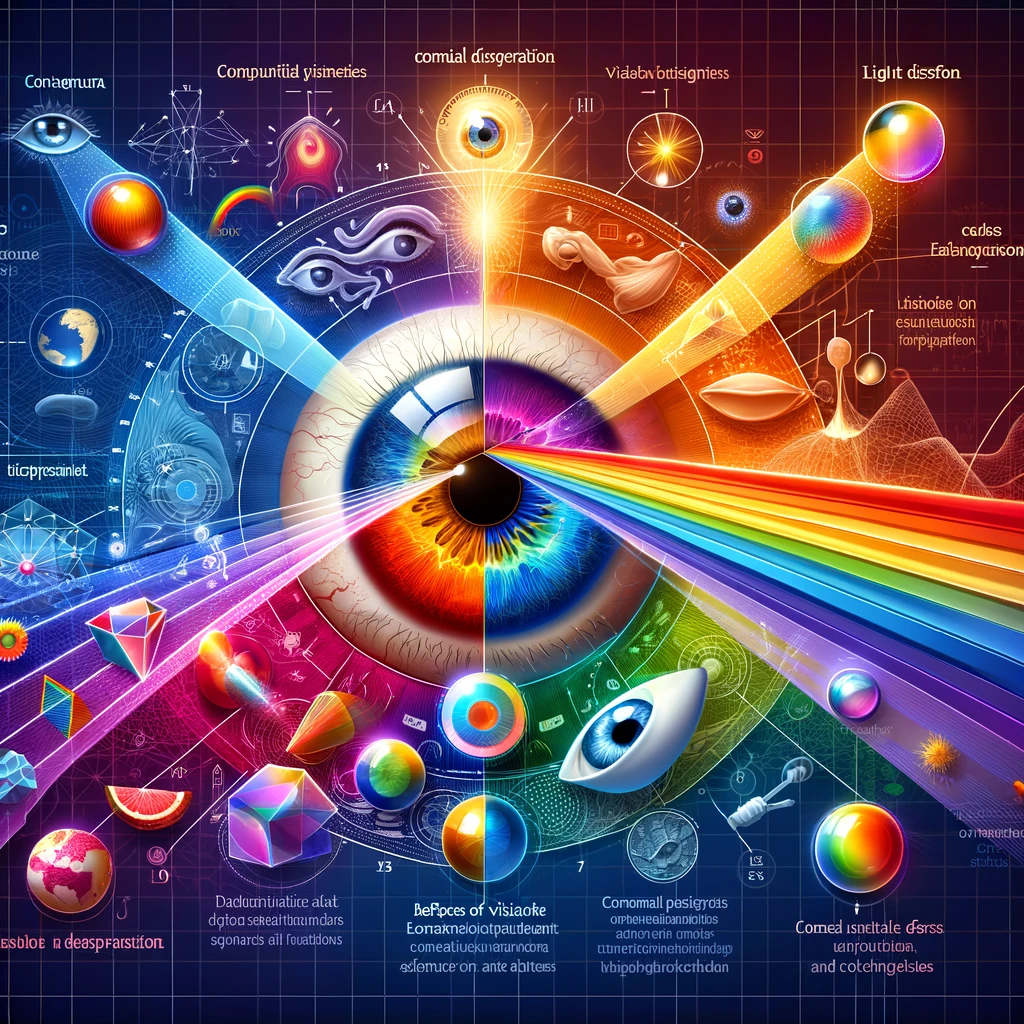
Understanding the Human Eye and the Beauty of Vision: A Class 10 Science Insight

The Human Eye and the Wonders of Vision
Introduction
The human eye is a marvel of biological engineering, enabling us to perceive the world in vibrant colors and intricate details. This chapter delves into the anatomy of the eye, the principles of vision, and the fascinating phenomena related to light and color perception.
Section 1: Anatomy and Function of the Human Eye
The human eye functions much like a camera, capturing light and converting it into electrical signals that the brain interprets as images.
Eye Structure
- Cornea: The transparent front layer that refracts light.
- Lens: Adjusts its shape to focus light onto the retina.
- Retina: Contains photoreceptor cells (rods and cones) that detect light and color.
Visual Process
- Explanation of how light enters the eye, is focused by the cornea and lens, and is converted into electrical signals by the retina for the brain to interpret.
Section 2: Light Dispersion and Rainbows
Dispersion of light occurs when white light separates into its constituent colors, as seen in the formation of rainbows and the splitting of light by prisms.
Formation of Rainbows
- Detailed description of how rainbows are formed through the refraction, dispersion, and total internal reflection of sunlight in water droplets in the atmosphere.
Section 3: Vision Defects and Corrections
Common vision defects include myopia (nearsightedness), hypermetropia (farsightedness), and presbyopia. These conditions arise from irregularities in the eye’s structure and can often be corrected with lenses.
Corrective Measures
- Glasses and Contact Lenses: Use of converging or diverging lenses to correct vision.
- Laser Eye Surgery: Procedures like LASIK to permanently correct certain vision defects.
Section 4: The Colourful World
This section explores the phenomenon of color perception, including how we see colors and why certain colors appear the way they do under different lighting conditions.
Color Perception
- The role of cones in the retina in detecting color and the impact of light conditions on color perception.
Conclusion
The human eye is a testament to the complexity and wonder of the natural world, offering us a gateway to the visual splendors of our environment. Understanding its workings not only satisfies our curiosity but also highlights the importance of caring for this vital organ.
Call to Action
Engage in experiments and activities that explore the phenomena of light dispersion, color perception, and the use of corrective lenses. Reflect on the importance of regular eye health check-ups and protecting your vision.